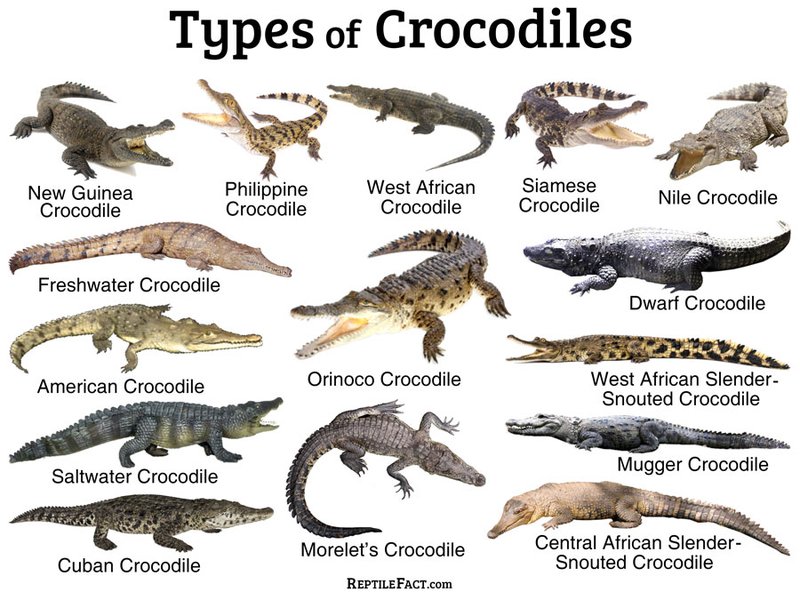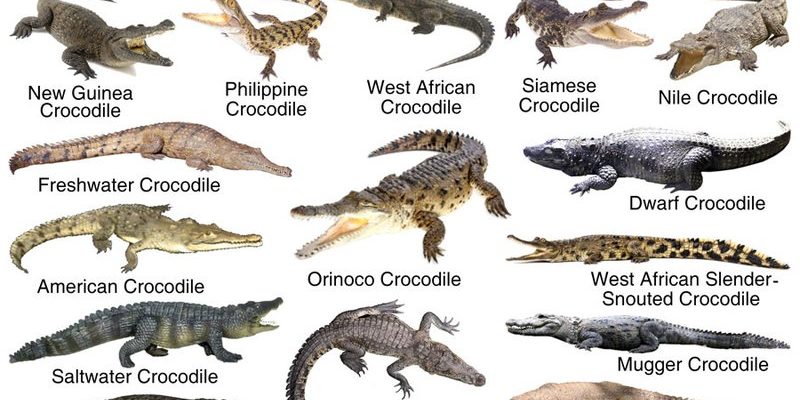
Imagine sitting near a serene riverbank, observing a crocodile basking in the sun. You might notice its tough skin and long snout. But wait! Is that another creature lurking nearby? Crocodiles have plenty of relatives, and some of them might surprise you. Let’s explore ten animals that are similar to crocodiles and discover how to tell them apart.
1. Alligators
Let’s kick things off with one of the most obvious comparisons: alligators. These two reptiles often get confused, but there are some distinct differences. Alligators are generally darker, sporting a more blackish hue, while crocodiles are usually a lighter olive or brown color.
Another way to tell them apart is by looking at their snouts. Alligators possess a U-shaped snout, which is broader, while crocodiles have a more pointed, V-shaped snout. If you see them in the wild, keep an eye on their teeth, too! When an alligator closes its mouth, its upper teeth overlap the lower ones, but with crocodiles, you can see the lower teeth fitting into grooves in the upper jaw.
If you were to get up close and personal—safely, of course—you’d notice alligators tend to prefer freshwater habitats like swamps and ponds, while crocodiles can often be found in saltwater regions.
2. Caiman
Next up, we have the caiman, another close relative of crocodiles. Caimans are smaller and come from South America. They share a lot of features with both crocodiles and alligators, like the tough skin and armored body.
However, if you look closely, a caiman’s snout is more rounded compared to the crocodile’s pointed face. Caimans also tend to have a boney ridge between their eyes that crocodiles lack, which gives them a really unique appearance.
What’s fascinating about caimans is their adaptability; they can thrive in a variety of habitats, from rivers to wetlands. So, if you’re exploring the Amazon, don’t be surprised if you see one sunbathing on a log!
3. Gharials
Now, let’s introduce the gharial—a truly unique member of the crocodilian family. These creatures are a bit more specialized than their cousins. With an extremely long and thin snout, gharials are perfectly adapted for catching fish. Their delicate, pointed teeth are like a chef’s knife, ideal for slicing through slippery prey.
You might find it interesting that gharials are primarily found in the rivers of India and Nepal. They prefer freshwater and are less aggressive than other crocodilians. In fact, they are often seen basking on riverbanks or floating peacefully, which can be quite a sight.
If you’re trying to differentiate gharials from crocodiles, just remember: it’s all about the snout! The gharial’s is very thin and elongated, unlike the broader, more robust appearance of a crocodile.
4. Orinoco Crocodile
Another fascinating cousin is the Orinoco crocodile, a lesser-known but stunning species found in South America. These crocodiles are critically endangered, but they are impressive in size, with some exceeding 15 feet in length!
What sets the Orinoco croc apart is its unique color pattern. They often sport a lighter, mottled skin that helps them blend into their environment. They also have a more rounded snout compared to other crocodiles, making them look a bit different.
If you ever venture into their habitat, which includes rivers and wetlands, remember to admire them from a distance. These creatures are strong and territorial, so respecting their space is key!
5. Nile Crocodile
The Nile crocodile is probably one of the most famous crocodilian species. You might recognize them from documentaries featuring the mighty Nile River. They’re known for their size and ferocity, being one of the largest crocodile species in Africa.
These crocs have a relatively broad snout, similar to that of American crocodiles, but their dark, rugged skin is typically adorned with a stunning pattern of lighter spots. To find out if you’re looking at a Nile crocodile or another type, check out the placement of their teeth. In Nile crocodiles, the fourth tooth on the lower jaw is visible even when the mouth is closed, which can help you identify them at a glance.
They’re opportunistic feeders, which means they’ll take advantage of whatever’s available for a meal—so always keep your distance!
6. Freshwater Crocodile
The freshwater crocodile, or “freshie,” as it’s sometimes affectionately called, is a smaller and less aggressive relative of the saltwater crocodile. Found mainly in Australia, these crocs have a more delicate appearance with a narrower snout, which makes them quite different from the larger, more formidable saltwater varieties.
You can easily distinguish a freshwater crocodile from a saltwater crocodile by their behavior too. The freshwater croc is more likely to shy away from people and is generally less aggressive. If you’re lucky enough to spot one, they’re often visible sunbathing on riverbanks or lurking quietly in shallow waters.
They also have a lighter coloration, with a pale yellowish-brown body, setting them apart from their darker cousins.
7. American Crocodile
Next, let’s talk about the American crocodile. Found primarily in the southern parts of the United States, Caribbean, and Central America, this species has a broader snout similar to Nile crocodiles but retains a lighter, olive-green color.
American crocodiles are also more tolerant of saltwater compared to their alligator cousins. If you see one basking near the coast, you’re likely looking at an American crocodile. They often inhabit coastal areas, which distinguishes them from other types that prefer freshwater.
Despite their size, they tend to be more bashful, often retreating when they sense humans nearby. This shy nature can sometimes make them difficult to spot in their natural habitat, which is pretty much the opposite of what you’d expect from such a large reptile!
8. Spectacled Caiman
The spectacled caiman gets its name from the bony ridge on its snout, giving it the appearance of wearing glasses. These caimans are found in regions of Central and South America and tend to be smaller than their alligator and crocodile relatives.
Despite their smaller size, they can be quite feisty when threatened. Spectacled caimans are known for their adaptability; they can thrive in various environments, such as swamps, lakes, and rivers.
If you’re curious about distinguishing them from other crocodilian species, their distinctive “spectacles” make it easy. Look for that unique ridge, and you’ve got your id confirmed!
9. False Gharial
The false gharial, known for its elongated snout, is another intriguing relative, found in parts of Southeast Asia. They resemble gharials but are closer to true crocodiles genetically.
Unlike their gharial cousins, false gharials have a wider snout and robust body. They’re mostly freshwater dwellers and are often spotted in rivers and swamps. Their diet primarily consists of fish, but they can also consume small land mammals when the opportunity arises.
When identifying a false gharial, pay attention to its snout. If it’s not as long and narrow as the gharial’s and you see a broader body, then you’re likely looking at a false gharial.
10. Mugger Crocodile
Last but not least, we have the mugger crocodile, found primarily in the Indian subcontinent. These crocs are quite robust, with a broad snout and strong jaws, allowing them to hunt a variety of prey, including fish and small mammals.
Mugger crocodiles typically inhabit freshwater lakes and rivers, making them more adaptable to different environments. They often exhibit a grayish-brown color, which helps them blend into muddy waters.
To tell them apart from other crocodilian species, focus on their more rounded snout and heavily armored back. They can also display a slightly more pronounced facial ridge, giving them a rugged look.
Crocodiles might be the stars of the show, but they have plenty of relatives with fascinating traits and behaviors! From alligators to gharials, each species has unique characteristics that set them apart. It’s incredible how nature works, creating such diverse animals within the same family.
So, next time you’re by the water and see one of these reptiles, take a moment to appreciate their differences. Whether it’s the color of their skin, the shape of their snouts, or their behavior, each creature tells a story. Understanding these similarities and differences not only adds to our appreciation of wildlife but also helps us learn how to coexist with them in a respectful way.

